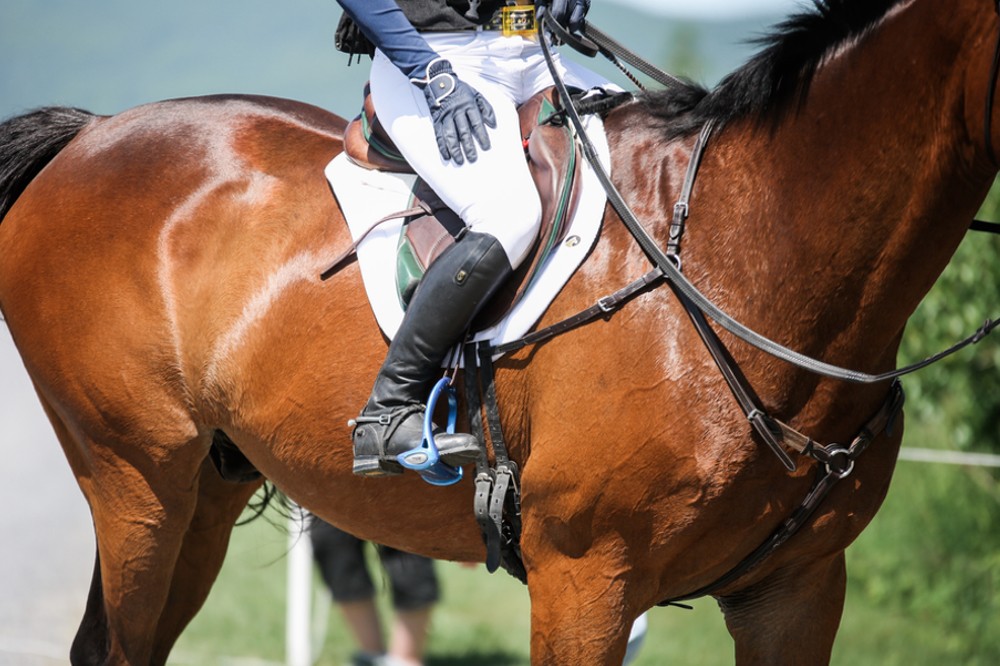Summer riding can be fun – between horse shows and the longer days, there’s more reasons than ever to get outside and ride. Riding in the heat can pose some health risks for your horse, so it’s important to recognize signs of heat stress in horses and take proper precautions.
Symptoms of heat stress include:
- Respiratory rate of 40 to 50+ breaths per minute.
- Heart rate of 61 to 80+ beats per minute.
- Gums ranging from reddish purple to dark red or purple.
- Rectal temperature between 103.1°F and 105°F.
- Horse appears depressed, uninterested in food, and may act uncoordinated (stumbling, loss of balance).
- Horse is often dripping sweat, but this type of sweating is ineffective. This type of sweating is also dangerous because large amounts of fluid and electrolytes are lost.
- Horse will be unresponsive to his surroundings. He may stagger, collapse and/or convulse. These signs can progress to coma and death.
There are several precautions you can take to prevent heat stress in horses. The first is by calculating the heat index. To do this, add the temperature (in degrees Fahrenheit) plus the % humidity. If the heat index is less than 130, a horse can generally cool out without hosing or sponging off – unless the humidity is over 75%. If the heat index is over 150, evaporative cooling is diminished and you should begin monitoring your horse closely. Anything above 180 means the horse cannot cool himself and should not be exercised.
Another way to combat heat stress is by letting your horse rest breaks in the shade and have drinks of water during your ride. There are also several cooling products (saddle pads, wraps, and even sheets) you can use before, during, or after your rides to help your horse stay cool as well.
Summer riding can be fun and, with a little planning, worry-free for both you and your horse.


